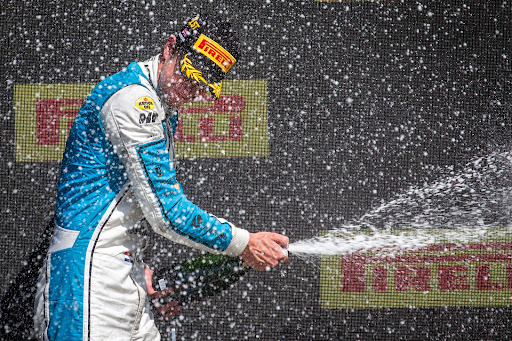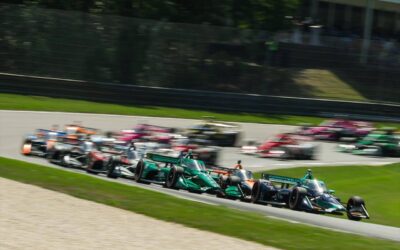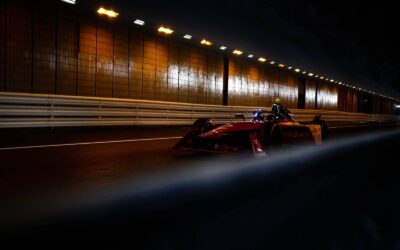Stemming from an iconic quote from F1’s Sebastian Vettel, ATRL’s Aino Ylitalo gives an insight to just how much money plays a role in the feeder series.
January 17, 2022
Today’s single-seater racing can cost up to €2 million a season. Costs of this magnitude result in many talented drivers dropping out or going to teams that may not help them genuinely showcase their talent.
This issue brings into question the credibility of the junior single-seaters as a feeder for the “Stars of Tomorrow,” as F2 claims to be, if we don’t have the best crop of drivers available. In F2, five drivers have had to cut their seasons short due to the expenses, including Richard Verschoor, who was technically still in contention for the championship.
Is money drowning out the real talent?
The importance of money starts in karting, with every single piece of equipment costing more than most parents can afford. This can unfairly affect the results of races since more expensive & newer equipment performs better. If someone can make it through karting, they can make the step up to junior single-seaters & open-wheel racing.
In this stage of a motorsport career, racers have to start getting sponsors to support and fund their seasons. The lowest single-seater series, F4, costs €200k, and the prices continue to increase with every step of the ladder until F2, where the average cost is €2 million.

Verschoor celebrating his first F2 race win (Photo via @mpmotorsport_)
And when drivers drop out, it becomes a confusing and messy situation for the team. They have to scramble to find someone for the race weekend, but more importantly, they have to find someone who can pay.
Where do the costs come from?
Everything adds up, and while a team can’t determine the cost of the whole season due to variables, there are some fixed costs. A driver’s fee pays for the employees’ salaries, car parts, possible engine and aero updates, racing suits, helmets, and even sometimes accommodation.
The list of costs isn’t short and adds a massive financial strain to the drivers, who are often very young.
Crashes, which frequently happen in the feeder series, cost around €10,000 for the driver, and the cost further increases depending on the severity of the crash. These costs could be why we often see drivers have funding problems after a big crash.

W Series Drivers via @WSeriesRacing on Instagram
W Series, a free-to-enter racing series for women, is actively combating these funding issues. They provide more equal opportunities for racers by removing the financial strain & barriers from the drivers, which often prevents them from moving up the motorsport ladder. The cars of the series are also entirely identical, providing each driver with an equal opportunity of showcasing their racecraft.
What happens next?
This financial strain has not gone unnoticed, with multiple current F1 drivers saying they wouldn’t have been able to compete in junior series at this price when they were first coming up. Most notably, the 7-time world champion Lewis Hamilton says that he couldn’t have afforded to race with the current costs given that he didn’t come from money like some of his colleagues.
Hamilton wasn’t the only person to bring this up. Mercedes team boss Toto Wolff also said that the prices the FIA expects the young drivers to pay are way too high. As a former racer, partial owner of Mercedes AMG Petronas, and a team principal Wolff has a clear picture of the money that’s involved in the industry.
After funding discussions became quite popular, the FIA looked at cost cuts for next season. Two easy fixes for the cost issue are reducing the gaps in the calendar and the number of races over a single weekend. Surely these changes for the 2022 season would cut costs, right?
F2 and F3 will have their biggest seasons to date in 2022, and both series will have record-breaking seasons with F3’s 9 rounds with 27 races and F2’s 14 rounds with 28 races. After considering those factors, it is estimated that the cost of an entire season in F2 will be around €3 million next year, meaning the costs actually increased.
Academies to save the day
F1 teams’ junior academies were invented to nurture young talent and help them improve to the next stage. The legendary founder of Scuderia Ferrari, Enzo Ferrari, has even said: “I love to think that Ferrari can create drivers as much as cars.”
Academies can offer testing days with old F1 cars, training facilities, and possibly sponsorships or financial help in a young driver’s career. What a young racer gets from their academy depends on what the F1 team offers.
The Red Bull Racing Junior Team may be most known for constantly signing and dropping drivers. While it is challenging to stay in the good graces of Red Bull, they are the most financially involved in young driver’s careers out of all the academies, so driving for them can help ease some of the financial strain.
Many people who have been dropped from Red Bull have been able to find other academies like Callum Ilott, who went to the Ferrari Driver Academy (FDA), and Dan Ticktum, who was at one time a Williams Academy driver.

Callum Ilott driving during an FP1 for Alfa Romeo (Photo via @callum_ilott on Twitter)
In contrast to the Red Bull Racing Junior Team, the FDA does not offer much financial backing. They focus more on giving their drivers access to resources like training facilities, connections, and testing at Maranello.
The worst-case scenario is when a driver academy requires money to support its running. For example, the Williams Driver Academy is full of talent, like double W-series champion Jamie Chadwick and multiple-time F2 race winner Jack Aitken. Unfortunately, most of their practice sessions are given to DAMS driver Roy Nissany. Nissany has had a solid run in F2, but his results haven’t been near Aitken’s.
The feeder series clearly have issues currently, but solving them is an uphill battle. It should be clear that the best racers get the best opportunities, not just the richest ones. While F1’s origins come from rich men playing with cars, the sport has evolved, and it’s crucial that the best talent we have can rise up without being stopped by costs.
We saw too many drivers have to drop out of their 2021 seasons, and that is proof enough that something needs to change. The FIA must do better to bring down the costs of feeder series.
ABOUT THE AUTHOR

My earliest memories of F1 were the Sundays I spent searching for the red Ferrari of Kimi Räikkönen. I guess you could say I was one of the kids Enzo Ferrari used to talk about. The ones who always drew a red car.
I’m currently a student hoping to focus on management & media in the future. Outside of motorsport I take interest in watches and music.
Related Articles
Accelerating Awareness of Mental Health in Motorsport
In this three-part series, ATRL’s Ayesha Ninan explores Formula 1’s approach toward destigmatizing mental health. The series details the sport’s journey from neglecting mental well-being to integrating enhanced support systems for its drivers and teams, highlighting individual experiences and broader cultural shifts within the high-pressure environment of Formula 1 racing.
Hitting the Apex: Children’s of Alabama Indy Grand Prix
The 2024 IndyCar season continues with its first road-course race at Barber Motorsports Park. All eyes will be on Team Penske as Josef Newgarden seeks redemption after this week’s news of a St. Pete’s DSQ impacted his championship lead.
Hitting the Apex: Monaco E-Prix
Formula E’s Season 10 is at its halfway point, with an upcoming race at the Circuit de Monaco. This race features all sessions in one day, making it crucial for drivers to avoid errors during the tightly scheduled events. The track, a spectacle for the Gen 3 cars, promises excitement with potential high overtaking as demonstrated last year.
Stay Up to Date With The Latest News & Updates
Interested in Writing for ATRL?
Contact us now! Fill out the form below and wait for an email from us to get started.
Join Our Newsletter
Subscribe to updates when we post a new article!
COMING SOON!
Follow Us
Follow us on Twitter and Instagram @ATRacingLine




YAY GO BESTIE! Amazing article as usual